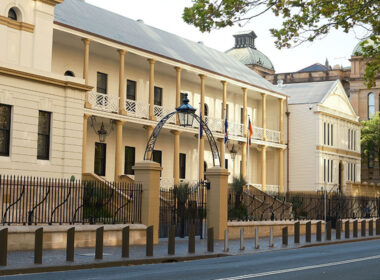Closing the Gap is everybody’s responsibility, and achieving these targets will benefit all of us.
A new report issued by the state’s police accountability body has recommended NSW Police adopt a clearer strategy for addressing Closing the Gap targets, including by working more closely with Indigenous communities.
The Law Enforcement Conduct Commission [LECC] published its monitoring report on the NSW Police’s Aboriginal Strategic Direction 2018-2023 on 23 October. The report found that despite “good work” being done to build relationships with Indigenous communities and organisations, the Aboriginal Strategic Direction “did not achieve its intended outcomes.”
The LECC has made 12 recommendations to improve the current approach. They include urging the NSW Government to “amend its Closing the Gap Implementation Plan to list the NSW Police Force as a responsible agency” and suggesting NSW Police “publish a Closing the Gap delivery plan which states how it will implement the priority reform and what actions and pathways it will take to help NSW … reduce overrepresentation.”
The LECC also urged NSW Police to review its procedures on day-to-day policing actions regarding discretion and give “practical instruction to officers about how to exercise discretion within the law in ways that will avoid over-representing Aboriginal people in the use of those police actions.”
“There is a complicated and often adversarial history between Aboriginal communities across NSW and the NSW Police Force,” the LECC report said in its foreword.
“This history continues to impact the day-to-day interactions these communities have with police. The other side of this relationship is the potential strengths that can flow from positive and respectful interactions.
“This report identifies a number of areas where future NSW Police Force Aboriginal Strategic Directions could be improved.”
 Karly Warner, the CEO of the Aboriginal Legal Service.
Karly Warner, the CEO of the Aboriginal Legal Service.
In a statement, the Aboriginal Legal Service said it welcomed the LECC’s review and noted “robust and independent police oversight and accountability is critical to a functioning system and an important pathway towards repairing community–police relationships and improving outcomes for Aboriginal people.”
As of February 2023, Aboriginal people made up 29.7 per cent of the adult prison population in NSW, which is the highest proportion on record, while the latest figures from June 2023 reveal Aboriginal young people represent 58.9 per cent of the juvenile detention population in NSW.
The Closing the Gap targets aim to reduce the incarceration rate of Aboriginal adults by at least 15 per cent, and of Aboriginal children by at least 30 per cent.
“Closing the Gap is everybody’s responsibility, and achieving these targets will benefit all of us,” said Karly Warner, the CEO of the Aboriginal Legal Service.
“By launching a new police-community engagement strategy without consulting us, and while refusing to engage with the LECC’s review into the previous strategy’s impact, NSW Police have demonstrated a lack of commitment to working in meaningful partnership to reduce Aboriginal over-incarceration.”
The Public Interest Advocacy Centre said in a statement that the LECC’s report “emphasises that NSW Police need to do more to reduce the stark overrepresentation of Aboriginal people in contact with the criminal justice system.”
The LECC’s review highlighted Aboriginal people are overrepresented in the use of Suspect Target Management Plans, a tool deployed by NSW to identifiy people believed to be at risk of committing a crime in the future. Once identified, that suspect can receive proactive attention from police, including stop and searches.
“The LECC report calls out a core principle of the Closing the Gap framework: over-representation of Aboriginal people in the criminal justice system will not improve unless Aboriginal peak organisations and communities are included in decision-making and design of policies that impact them. NSW Police need to step up and be part of the solution,” the Centre’s CEO Jonathon Hunyor said.




